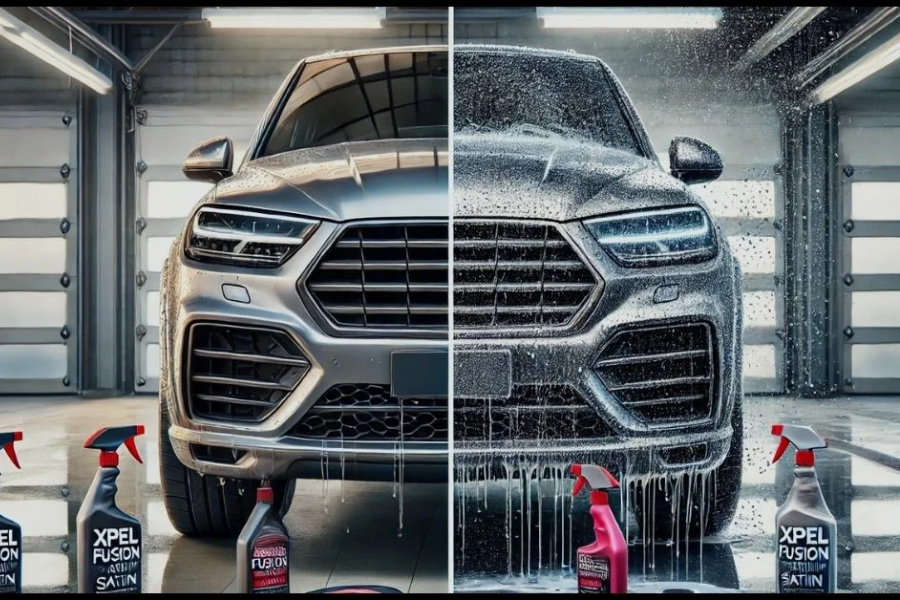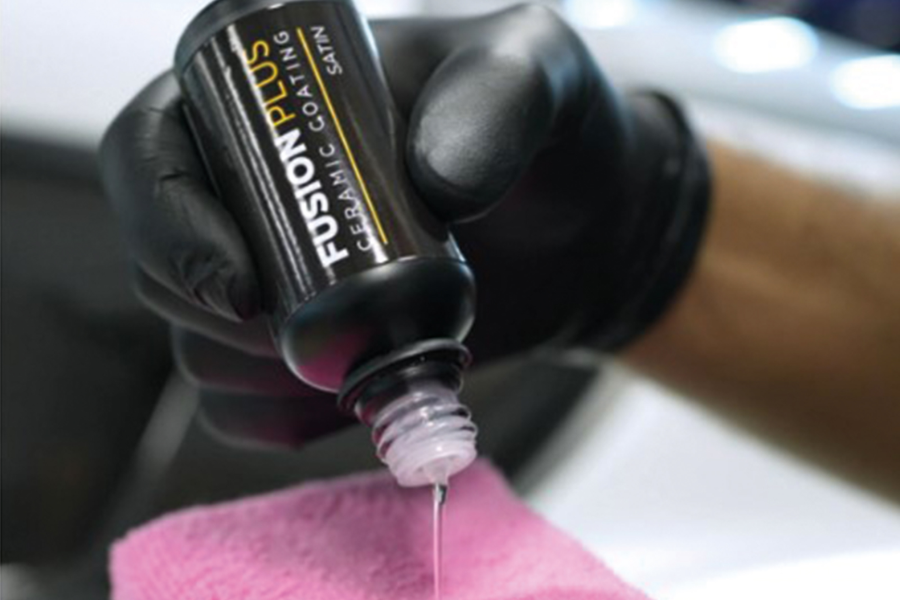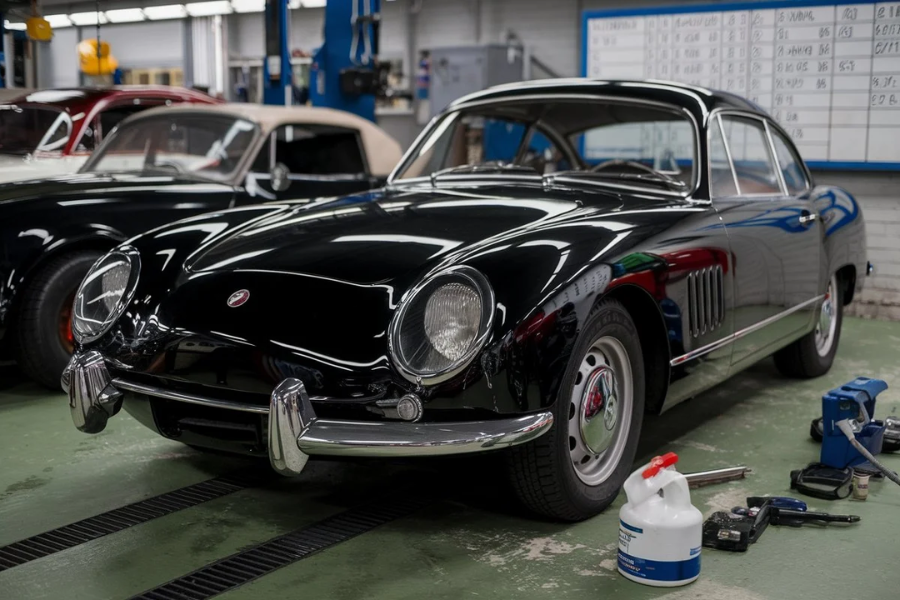Introduction
Ceramic coatings have gained immense popularity among car enthusiasts due to their superior ability to shield vehicle surfaces from environmental damage and wear. Two prominent names in this industry are XPEL Fusion Plus Satin Ceramic Coating vs Dr Beasley Satin Ceramic Coating and Dr. Beasley’s offerings, both known for their exceptional performance on matte and satin finishes. These coatings provide robust protection against UV rays, dirt, and various contaminants. This article will explore the similarities and differences between XPEL Fusion Plus Satin Ceramic Coating vs Dr Beasley and Dr. Beasley, offering a detailed comparison for car owners considering their vehicle’s best protective options.
What Are Ceramic Coatings?
Ceramic coatings have become essential for many car owners seeking to preserve their vehicle’s aesthetic appeal and longevity. These coatings chemically bond with the car’s paint, creating a protective layer that guards against hazards like road debris, water, dirt, and harmful UV rays. Unlike waxes or sealants, ceramic coatings deliver extended protection and enhanced resistance to wear and tear.
Both XPEL Fusion Plus Satin Ceramic Coating vs Dr Beasley and Dr. Beasley focus on providing superior protection specifically for matte and satin finishes. These surfaces are more vulnerable to damage than glossy ones, necessitating tailored protection that preserves their original appearance. Let’s examine what differentiates these two ceramic coatings.
XPEL Fusion Plus Satin Ceramic Coating vs Dr Beasley Satin Ceramic Coating: An Overview
XPEL has established a solid reputation in vehicle protection, and its Fusion Plus Satin Ceramic Coating is a top-tier choice for satin and matte finishes. One of its most significant benefits is that it maintains the vehicle’s original look without adding any unwanted gloss, enhancing both durability and protection.
XPEL Fusion Plus Satin Ceramic Coating vs Dr Beasley boasts advanced hydrophobic properties, making it challenging for water, dirt, and contaminants to cling to the surface. This feature simplifies the cleaning process and minimizes the risk of water spots, which are particularly noticeable on matte finishes. Additionally, the coating offers UV protection, preventing fading and discoloration over time. With proper maintenance, XPEL’s ceramic coating can remain effective for up to five years.
While it is more expensive than other ceramic coatings, its durability and high-quality finish make it a worthwhile investment for anyone looking to keep their vehicle’s satin or matte paint in pristine condition.
Dr. Beasley’s Ceramic Coatings: An Overview
Dr. Beasley’s products are another top contender in the ceramic coating market, known for their user-friendly formulations accessible to both professionals and DIY enthusiasts. Like XPEL, Dr. Beasley’s ceramic coatings are specifically designed to protect matte and satin finishes without adding gloss. The company offers a diverse range of coatings suitable for various surfaces, including plastic, metal, and rubber, making it a versatile option for vehicle protection.
One of the standout features of Dr. Beasley’s ceramic coatings is their ease of application. Although professional installation is recommended for optimal results, many car owners find it straightforward to apply Dr. Beasley’s products at home with the right tools and instructions. This makes it a more budget-friendly option for those preferring a DIY approach to car maintenance.
In terms of performance, Dr. Beasley’s coatings provide excellent hydrophobic properties, UV protection, and resistance to chemicals and environmental pollutants. While they also offer long-lasting protection, some users may need to reapply the coating more frequently based on the application method and vehicle maintenance practices.
Hydrophobic Protection: A Side-by-Side Comparison
When comparing hydrophobic capabilities, both XPEL Fusion Plus Satin Ceramic Coating vs Dr Beasley and Dr. Beasley excel in repelling water, although they achieve this in slightly different ways.
XPEL Fusion Plus Satin Ceramic Coating vs Dr Beasley creates a highly slick surface that enables water to bead up and roll off effortlessly, reducing the likelihood of water spots forming on the paint. This feature is crucial for matte finishes, which tend to show watermarks more prominently than glossy paint. The hydrophobic properties also facilitate easier car washing since dirt and grime are less likely to adhere.
Conversely, Dr. Beasley’s ceramic coatings also provide robust hydrophobic protection. Their formulation ensures that water, dust, and debris slide off the surface, helping to keep the vehicle cleaner for extended periods. However, some users report that XPEL’s hydrophobic effect may last longer, particularly when professionally applied.
Longevity and Durability
Both XPEL Fusion Plus Satin Ceramic Coating vs Dr Beasley and Dr. Beasley are engineered to deliver long-term protection, but XPEL is often viewed as having superior durability. With proper care, XPEL Fusion Plus Satin Ceramic Coating vs Dr Beasley can last up to five years, making it an excellent option for those seeking a low-maintenance solution.
Dr. Beasley’s coatings are durable as well, though they might require more frequent reapplication, especially if applied by a non-professional. Nevertheless, for DIY enthusiasts, the ease of application and cost-effectiveness of Dr. Beasley’s products make them an attractive choice, even if reapplication is necessary after a couple of years.
Application Process: Key Differences
One of the main distinctions between XPEL Fusion Plus Satin Ceramic Coating vs Dr Beasley and Dr. Beasley lies in their application processes. XPEL Fusion Plus Satin Ceramic Coating vs Dr Beasley is typically recommended for professional installation due to the precision required for even coverage and the necessity of a controlled environment to avoid contamination. Improper application can lead to uneven results or reduced lifespan of the protection.
In contrast, Dr. Beasley’s coatings are designed for easier at-home application. The brand offers detailed instructions and user-friendly kits, allowing car owners to apply the coating themselves. While professional application will yield the best results, Dr. Beasley’s products are more forgiving, even for those without professional experience.
Aesthetic Preservation
A significant reason car owners invest in ceramic coatings for satin and matte finishes is to maintain the distinctive appearance of their vehicles. Both XPEL Fusion Plus Satin Ceramic Coating vs Dr Beasley and Dr. Beasley excel in this area, as they are specifically formulated to protect delicate finishes without altering their look.
XPEL Fusion Plus Satin Ceramic Coating vs Dr Beasley is particularly renowned for enhancing satin finishes while avoiding unwanted gloss. This aspect is crucial for car owners aiming to retain the matte or satin aesthetic while benefiting from ceramic protection.
Dr. Beasley’s coatings also effectively preserve the natural appearance of satin and matte finishes. They maintain the paint’s original look while providing the added advantages of ceramic protection. However, some users note that XPEL offers a more refined finish regarding aesthetic preservation, especially when applied professionally.
Protection from Environmental Hazards
Both XPEL Fusion Plus Satin Ceramic Coating vs Dr Beasley and Dr. Beasley provide excellent protection against environmental threats such as UV rays, bird droppings, and acid rain. These coatings create a barrier that prevents harmful contaminants from reaching the paint surface, significantly reducing the risk of damage and staining.
XPEL Fusion Plus Satin Ceramic Coating vs Dr Beasley excels in its UV resistance, helping to prevent paint fading over time. Its chemical-resistant properties ensure that contaminants like bird droppings or acid rain do not penetrate the surface, causing lasting damage.
While Dr. Beasley’s coatings also offer strong protection against environmental hazards, some users feel that XPEL’s coating provides slightly better performance regarding chemical resistance and UV protection. However, for most users, Dr. Beasley’s offerings provide sufficient protection for everyday driving conditions.
Cost Comparison
When it comes to pricing, XPEL Fusion Plus Satin Ceramic Coating vs Dr Beasley and Dr. Beasley significantly differ. XPEL is typically more expensive, particularly when considering the cost of professional application. Nevertheless, its long-lasting durability and high-quality finish justify the investment for those looking to protect their satin or matte paint for years.
On the other hand, Dr. Beasley offers a more budget-friendly solution, especially for those willing to apply the coating themselves. While it may not provide the same longevity as XPEL’s coating, its lower price point and ease of application make it an appealing option for many car owners.
FAQs:
1. What is the primary difference between XPEL Fusion Plus Satin Ceramic Coating vs Dr Beasley and Dr. Beasley’s ceramic coatings?
XPEL Fusion Plus Satin Ceramic Coating vs Dr Beasley is typically recommended for professional application, offering superior longevity and durability, particularly for satin finishes. In contrast, Dr. Beasley’s coatings are designed for ease of use and accessibility for DIY enthusiasts, providing a cost-effective option for those who want to apply the coating themselves.
2. How long does each ceramic coating last?
XPEL Fusion Plus Satin Ceramic Coating vs Dr Beasley can last up to five years with proper care, while Dr. Beasley’s coatings generally last around two to three years, depending on application and maintenance.
3. Which coating offers better hydrophobic properties?
Both coatings provide excellent water-repellent capabilities, but users often report that XPEL Fusion Plus Satin Ceramic Coating vs Dr Beasley has a slight edge in maintaining its hydrophobic effect longer, especially when applied by professionals.
4. Can I apply these coatings at home?
While XPEL Fusion Plus Satin Ceramic Coating vs Dr Beasley is best applied by professionals for optimal results, Dr. Beasley’s coatings are user-friendly and can be applied at home with proper instructions and tools.
5. Do these coatings affect the appearance of satin or matte finishes?
Both XPEL Fusion Plus Satin Ceramic Coating vs Dr Beasley and Dr. Beasley’s coatings are formulated to preserve the original look of satin and matte finishes. XPEL is particularly praised for enhancing the satin finish without adding gloss, while Dr. Beasley’s coatings also maintain the natural appearance of the paint.
6. How do the prices compare between the two products?
XPEL Fusion Plus Satin Ceramic Coating vs Dr Beasley is generally more expensive, especially when factoring in professional application costs. Dr. Beasley’s coatings are more affordable, particularly for DIY application, making them a budget-friendly option.
Conclusion
When choosing between XPEL Fusion Plus Satin Ceramic Coating vs Dr Beasley Satin Ceramic Coating and Dr. Beasley’s ceramic coatings, car owners must consider their specific needs and preferences. XPEL Fusion Plus Satin Ceramic Coating vs Dr Beasley stands out for its long-lasting durability, professional-grade application, and superior hydrophobic properties, making it ideal for those who prioritize high-end protection for their satin finishes. On the other hand, Dr. Beasley’s coatings offer an accessible and cost-effective solution for DIY enthusiasts looking to maintain their vehicle’s appearance without the need for professional installation.
Both coatings effectively protect against environmental hazards while preserving the aesthetic qualities of matte and satin finishes. Ultimately, the decision between the two will depend on your budget, application preferences, and how much maintenance you are willing to commit to.

Leave a Reply